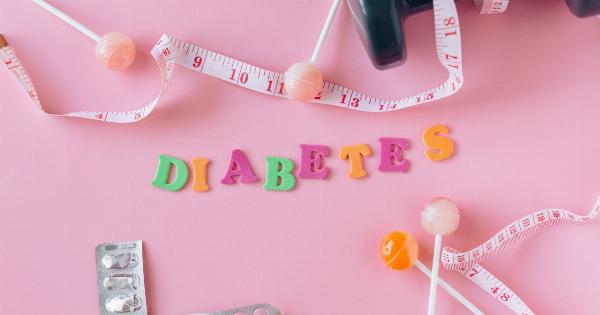It is no secret that exercise is good for your health. Regular exercise not only helps individuals maintain an ideal weight, but it is also known to improve heart health.
Additionally, engaging in regular exercise has been found to have a positive effect on sugar, pressure, and cholesterol reduction. In this article, we will delve into the details of how exercise helps to reduce sugar, pressure, and cholesterol levels in the body.
Sugar Reduction
Exercise can play a significant role in reducing sugar levels in the body. During exercise, muscle cells use glucose for energy. This helps lower blood sugar levels, especially in individuals suffering from type 2 diabetes.
In addition, regular exercise enhances the uptake of glucose by muscles and improves insulin sensitivity, which contributes to lower blood sugar levels.
Aerobic activity such as running or cycling helps to burn calories and enhance insulin sensitivity.
According to studies, moderate-intensity physical activity such as brisk walking, cycling, swimming, or dancing for at least 150 minutes per week, can help lower blood sugar levels significantly.
Pressure Reduction
High blood pressure is a serious health condition that can lead to heart and kidney diseases if left untreated. Research shows that regular physical activity can be an effective way to help lower high blood pressure.
During exercise, blood vessels open up and allow blood to flow more freely, which helps to reduce resistance to blood flow in the peripheral arteries. Additionally, exercise dilates the blood vessels, which leads to reduced blood pressure levels.
Regular exercise helps to keep blood vessels elastic and healthy, which contributes to a healthy blood pressure level.
Engaging in moderate-intensity aerobic activity, such as brisk walking, cycling, swimming, or dancing for at least 150 minutes per week, helps to improve blood pressure levels significantly.
Resistance training, such as lifting weights or bodyweight exercises, can also help to reduce blood pressure levels.
Cholesterol Reduction
Cholesterol is a type of fat that can have negative effects on our heart health if present in high levels. Exercise can help to reduce cholesterol levels in the body.
Regular aerobic exercise for at least 150 minutes a week has been shown to significantly reduce bad cholesterol levels (LDL) and increase good cholesterol levels (HDL).
During exercise, the body starts burning fat for energy, which leads to a reduction in overall body fat and bad cholesterol levels. Additionally, exercise can reduce triglyceride levels, another type of fat that can increase the risk of heart disease.
Weight loss resulting from regular exercise also contributes to cholesterol reduction and has been found to promote positive changes in lipid profiles.
Conclusion
Regular exercise plays a crucial role in promoting overall health and reducing the risk of serious health conditions such as type 2 diabetes, high blood pressure, and heart disease.
While exercise alone may not be sufficient to cure these conditions, it is an important piece of the puzzle to leading a healthy lifestyle. Therefore, individuals should engage in regular physical activity, following expert advice on what kind of exercise is best for their health condition.
Regular exercise can contribute to a healthy lifestyle, and individuals can easily perform many types of moderate-intensity exercise, including walking, cycling, swimming, or dancing.
Integrating exercise into your daily routine can help to maintain a healthy weight, healthy blood pressure level, and cholesterol level, and reduce the risk of serious health conditions.




























